Analog designers often need matched resistors for their circuits [1]. The best solution is to buy integrated resistor networks [2], but what can you do if the parts vendors do not offer the desired values or matching grade?
The circuit in Figure 1 can help. It is made of two voltage dividers (a Wheatstone bridge) followed by an instrumentation amplifier, IA, with a gain of 160. R3 is the reference resistor, and R4 is its match. The circuit subtracts the voltages coming out of the two dividers and amplifies the difference.
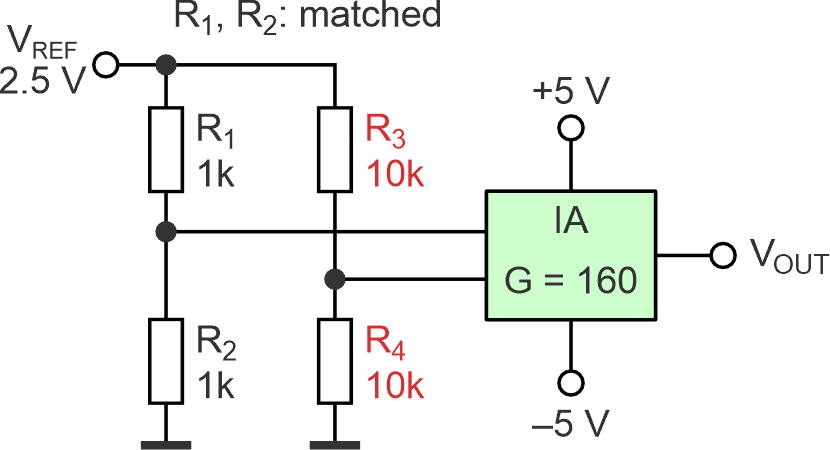 |
|
| Figure 1. | The intuitive solution is a circuit made of a Wheatstone bridge and an instrumentation amplifier. |
Calculations show that the circuit provides a perfectly linear response between output voltage and resistor mismatch (see Figure 2). The slope of the line is 1 V per 1% of resistor mismatch; for example, a VOUT of –1 V means -1% deviation between R3 and R4.
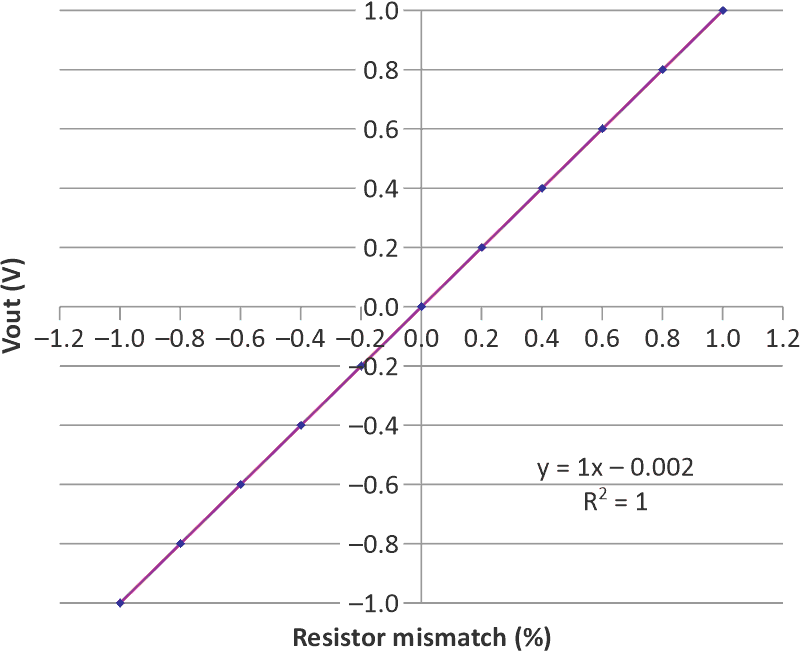 |
|
| Figure 2. | Circuit response is perfectly linear with a 1:1 ratio between output voltage and resistor mismatch. |
A possible drawback is the price: instrumentation amplifiers with a power supply of ±5 V and more start at about 6.20 USD. Figure 3 shows another circuit using a dual op-amp, which is 2.6 times cheaper than the cheapest instrumentation amplifier.
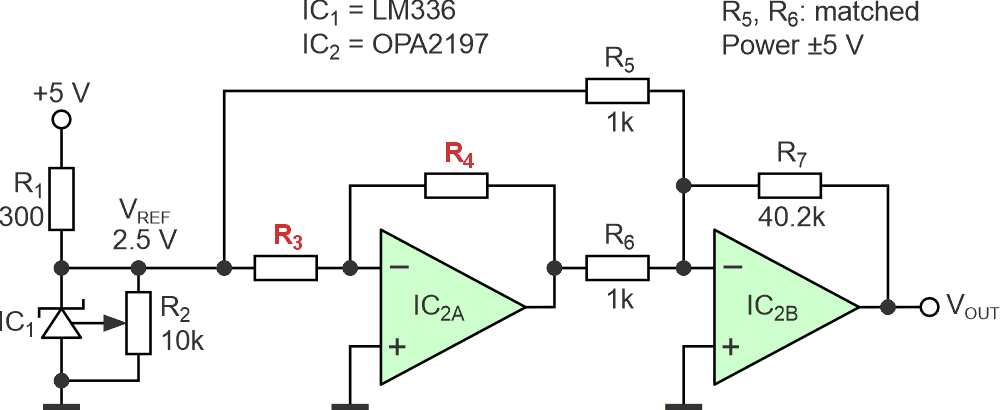 |
|
| Figure 3. | This circuit also provides a perfect 1:1 response, but at a lower cost. |
The transfer function is:
 |
(1) |
Assuming,
 |
(2) |
converts the transfer function into the form,
 |
(3) |
If the term within the brackets equals unity and R5 equals R6, the transfer function becomes
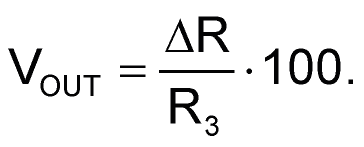 |
(4) |
In other words, the output voltage equals the percentage deviation of R4 with respect to R3. This voltage can be positive, negative, or, in the case of a perfect match between R3 and R4, zero.
The circuit is tested for R3 = 10.001 kΩ and R4 = 10 kΩ ±1%. As Figure 4 shows, the transfer function is perfectly linear (the R2 factor equals unity) and provides a one-to-one relation between output voltage and resistor mismatch. The slope of the line is adjusted to unity using potentiometer R2 and the two end values of R4. A minor offset is present due to the imperfect match between R5 and R6 and the offset voltage VIO of the op-amps.
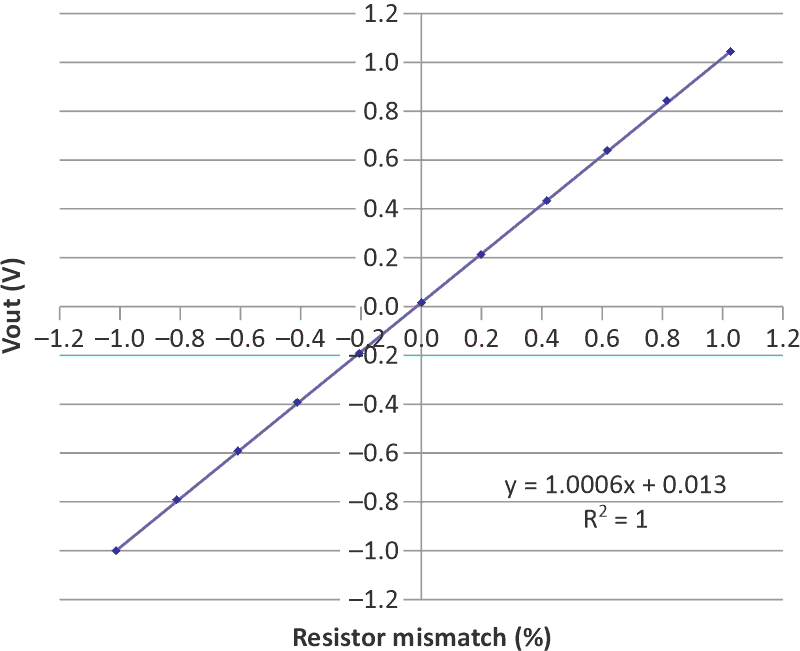 |
|
| Figure 4. | The transfer function provides a convenient one-to-one reading. |
A funny detail is that the circuit can be used to find a pair of matched resistors, R5 and R6, for itself. As mentioned before, it is better to buy a network of matched resistors. It may look expensive, but it is worth the money.
Equation 3 shows that circuit sensitivity can be increased by increasing R7 and/or VREF. For example, if R7 goes up to 402 kΩ, the slope of the response line will increase to 10 V per 1% of resistor mismatch. A mismatch of 0.01% will generate an output voltage of 100 mV, which can be measured with high confidence.
Watch the current capacity of VREF and op-amps when you deal with small resistors. A reference resistor of 100 Ω, for example, will draw 25 mA from VREF into the output of the first op-amp. Another 2.5 mA will flow through R5.
References
- Bill Schweber. The why and how of matched resistors (a two part series).
- Art Kay. Should you use discrete resistors or a resistor network?